
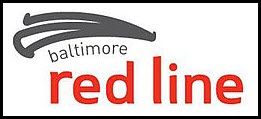
In General
Map
Discussions
Floobydust
RAILROAD SIGNALS HOME
This page is a mixture of "the truth" and my own personal opinion. If you're tired of reading opinions on and of the Red Line, please leave now :-)
Baltimore's proposed Red Line light rail system was controversial from the very start. It was proposed to go thru Canton when many there felt it wasn't needed. It was proposed to go through downtown Baltimore in another tunnel, like the Metro Subway system, starting in Canton, and facing the same challenges that the Metro did when it extended the line from Charles Street to Hopkins.
No-one who knows me can deny that I am a big fan and supporter of Mass Transit, but there are some ideas and plans that we should just let go of.... this is one of them. And yes, whenever I can, I do ride Mass Transit, even busses! :-)
One reason I have a problem with the system is: What many people (read: supporters) of the system forget, is that to attract more than just the "poor", the system has to be integrated into the rest of the areas transit systems so that it makes it easy for everyone to get around. One of the biggest problems with the rail transit in Baltimore is that other than Penn and Camden stations (with connections to regional and commuter rail), there is no connection between the light rail and the metro system. Why is that? Why did AND how could the MTA design a system like that? That one decision alone has prevented the two systems from attracting more riders, especially from the suburbs. I'm all for "helping the poor, and the "disadvantaged", but what does this system really do for these people - THAT BUSSES DON'T (or can't) ALREADY DO? Do we really need to spend 3 billion dollars (plus), just so the poor can brag about getting to work on a flashy new system? The money would be better spent trying to directly help those people! For what it will cost to build the Red Line, you could buy a car for almost everyone using the Red Line, that doesn't have access to one. They than become masters of their time, instead of being subservient to the MTA for getting them to wherever they are going. Yes, this defeats the purpose of mass transit, but there are times when it is nice to have an alternative - see below.
For all of the money that is being planned on "us" spending to put this system in, let's not forget some of the negative aspects of rail systems in general:
1) - Let's say you have an accident on the line - the whole line all of a sudden comes to a grinding halt because we now need to investigate and clean up the scene of the accident. Witness the accident on the Light Rail system on Monday, May 8th, 2023 in Timonium where some jerk is walking on the tracks, and the train runs into him and kills him. I'm not going to try to understand why the operator couldn't stop in time, or why the guy didn't hear the train, all I know is that the line was shut down for hours, inconveniencing thousands of riders who are trying to get to work because the happened at something like 6 in the morning. When the trains stop running, there is NO WAY to get around the affected area. Same goes for a tree falling down on the wires. Same goes for a power outage in the area that affects more than 2 substations. Busses can quickly adapt and be re-routed in times like these. You don't have these kinds of problems with busses because they can go "around" the affected area using an alternate route.
2) - Someone needs to pay for building AND the ongoing maintenance of the system. Someone. That means you and me, regardless of whether or not you ride it - maybe it doesn't go where you need to go, or maybe there is a safety concern, and giving the recent uptick in gun violence in the city, how can you blame anyone for not wanting to take public transit. On top of that, if you are a fan of having more 95's on the trains (MTA parlance for the police), what is that going to cost? Conservatively speaking, that would be in the neighborhood of a million bucks a year for 10 cops! When they originally built the first part of the system, I think I remember it costing around $1.5 million a mile to build. That figure has now jumped to something like 15 to 20 million a mile, given the costs of building the latest additions or new systems. Why has it become more expensive? And that is just for starters, most contracts allow for additional charges if the contractors run into unseen situations. This is why the King of Prussia extension of the NHSL (Norristown High Speed Line) in Philadelphia was cancelled - the FEDS said that costs were spiraling out of control! Again, for some reason, when the Brits or French build a system, it doesn't cost as much as it does here, and one has to wonder why??? But we still keep building despite spiraling and out of control costs.
3) - The maintenance aspect of a rail system is huge, and not to be under estimated. What do you think the Light Rail yard and maintenance facility at North Avenue costs every year to keep open and run? I have no clue, but we could make a few guesses - let's pull a number out of the air and say it costs the MTA 50 mil a year to keep North Avenue open every year.... How about all of those crossing gate arms that people run thru and then need replacing. How about that TVM (ticket vending machine) that isn't spitting out tickets, so now there's a huge long line for tickets, and you're running late for work, ooooops, screwed again! How about a switch that is stuck from either snow in it because the heater stopped working, or a motor failed (very rare, but it can happen), the line gets backed up again, and hardly anything moves, if at all. Busses don't have these problems, and if their farebox goes bad, a "new" bus is soon to arrive. Add to this, you need a locomotive to pull a dead train, you need a tamper to regularly go out and keep the track in good condition, you need to have a company come in and grind the rail every few years-busses don't need this, in the shop you have this expensive piece of special machinery from Germany to keep the wheels "true" and round-buses don't need this kind of machine.... And then there is winter, where EVERY switch has a heater on it to prevent it from freezing up, and even when they work on the line, for 3 weeks, and nothing ran, like they recently did in Timonium (MAR 2023) to replace the Timonium Business Park Rd grade crossing, they didn't turn off the heaters (there are blue lights that come on when the heaters are ON)-busses don't need heaters, the city and county keep the streets clear. 30 years ago when I worked at Light Rail, it cost $1200 for a matched pair of semiconductors for the modules that make the train move, and there are 6 pairs of them in the 2 propulsion modules-busses have reliable engines that can last 100's of thousands of miles before they need to be rebuilt, and the parts are easy to source, those semiconductors - not so much!!!
4) - Keeping the fleet current. When a bus gets old, they scrap it, or they rebuild the engine and transmission if the frame hasn't logged too many hours. With the LRV's (Light Rail Vehicles), you don't wanna throw away something that cost you millions (about $2 million in 1990) to buy. So instead, they spend another million or so, per car, to update the things. I hear, operationally, the updated LRV's have so many more glitches and safety "lock-out's" running in the software, that it's a wonder the dam things move at all. I have not heard of this happening with any of the bus fleets.
5) - Planners of the Light Rail system back in the 1980's told us that it was going to be a Renaissance for the Howard Street corridor. Thirty years later, we are still waiting for that Renaissance to come.
6) - Stations for a rail project are fixed. They cannot be moved to compensate for things like new buildings (the buildings have to be built around the stations), changing demographics, dictating the relocation of a station, and whole host of other reasons.
I know the U.S. is in the middle of a rail renaissance, but not every system is needed or will produce the desired results the planners think it will bring. Northern Virginia decided (in June 2015) against spending the money on a light rail system, because enough people had the sense to realize the cost was just not worth the end result. Hooray for them!
Before I get "into it" in more detail, let's go over a few things to back up why I say the things I say. These things don't just appear, you have to go searching for them. The things you find may not support YOUR desired result or ambition. Sometimes we need to know when to say STOP, or pull-the-plug. Not every transit idea is a good idea, altho on the surface, they may sound good. Two major issues any transit company has to deal with is farebox recovery, and the affordability of the fare structure so people can ride it. Here are a couple of things I came across, the definitions are pretty much standard, and the Guardian article can be torn apart, maybe, but it still provides another point of view which transit advocates will not agree with, BECAUSE it doesn't support their end game, which is to have a rail line put in. If you read the Guardian article, the poor blokes in London spend even more of their hard earned money to ride the Underground. Maryland, overall, seems to be towards the bottom rungs of farebox recovery, I think that number is from 2019? 23% is not a good number, you might as well make it free at that point, besides, it's another thing we can let the casino money pay for, like education (and don't get me started on that one.....).
Another way to look at this is, and if there is one point I make to discourage the construction of a new system, this is perhaps the most important one: For every dollar it costs to operate (say) the light rail system, tickets pay for 23% of the costs, so that means you and I are paying 77 cents towards to keep it running - everyone, rich or poor. And that is why it hurts the poor more than it does the rich or the middle class. If we build yet another rail system which costs way more to build AND maintain, "our" share will increase, as the farebox recovery rate will go down. Mr. Leroy has failed to incorporate this fact into his argument that a new light rail system is beneficial to "the poor". Mr. Leroy will also squawk at this comparison, but if buying things cheap wasn't a priority for most Americans, then why has Walmart flourished? So again, I will ask the obvious question, why do we want to spend MORE money for something when "it" can be purchased for way less by putting in a bus system? Yeah, I don't know either.... But the light rail advocates are trying to throw us down that rabbit hole :-( One more comment about farebox recovery for the rail advocates. The 23% number is an average. But averages also tell us that among the three modes of transportation Maryland offers in Baltimore: Metro, light rail, and bus, bus service has the highest farebox recovery, and Metro the lowest. Look at what the Metro system needs to maintain in comparison to that of the bus service, and you will immediately see that the only thing the bus service needs to maintain are the busses, and nothing else!!!
The last screenshot pretty much boils down my whole page into one simple question.... a new rail system is better for who? And this is where most of the debate should happen. Reality Check: If you think that by having a tax on companies to help pay for the system, do you really think they are going to absorb the cost without passing on the increased cost of business to the customer, somehow? While it sounds nice, we will ALL be paying for the billions of dollars it costs to build a rail system, both thru our federal taxes, our state and local taxes, and the increased cost of goods companies will pass along to us. Someone has to pay, and it is YOU and ME, there is no magic involved. Any money the Feds give to a project, where do you think that money comes from? It's not the rich and most large corporations, because we have been shown over and over and over again that they DO NOT pay their fair share of taxes, so it falls onto the shoulders of the average American citizen (my mini rant for the day :-).


 Average
Fare Box Recovery Rate across Maryland, all Transit Services
Average
Fare Box Recovery Rate across Maryland, all Transit Services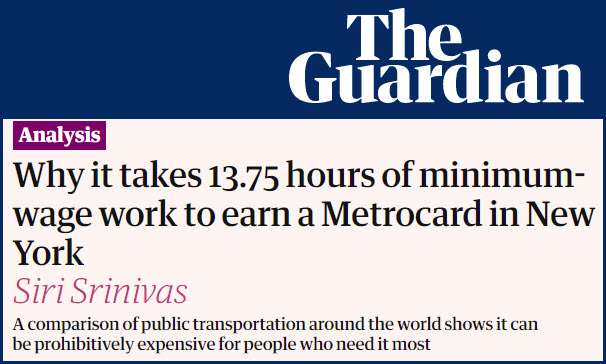

So here we go again, designing yet another (third) system that will have NO commonality with either of the two existing systems. Again, how can the MTA be so stupid in their decisions and design choices? How are we supposed to transfer between the three systems without getting exposed to the weather? Why don't they design the system to use both high and low platforms, and then use part of the Metro Subway system's tunnel? Run it down Security Blvd instead of down the middle of the end of I-70 - putting it in the middle of the interstates might be OK in some cities, but just like the Metro system running up I-795, it now becomes more of a commuter rail system that is not easy to get to in Owings Mills, not when you have to drive to get to it, much like you do when you use a commuter rail system.
One of the Sunpaper articles below states that with the decision to nix the Red Line, Maryland will lose $288 million from the Feds. But has anyone considered where Maryland's portion of the outrageous $2.9 billion in construction costs would come from? Do we really need to pay $2.6 billion just so we can get a measly 10% of the construction costs for free? Would you buy a house if someone was going to give you 10% of its costs, but you really STILL couldn't afford to buy the house? Doesn't make sense to me either.
In a later story by Sheryll Cashin (Politico, link below), she asserts that the cancellation of the Red Line is keeping the city segregated and poor. What BS! First of all, HOW??? Please explain and prove your allegation honey. The poor of Baltimore are doing a fine job of keeping themselves poor without anyone's help..... As I said elsewhere, providing city residents with a flashy way to get out of the city is not going to make them any better off, or do anything for them - other than cost THEM more in the long run, when now, the state will have to tax the poor EVEN MORE to keep paying for the millions of dollars it just cost to build, and then maintain the system, but hardly anyone thinks about those costs to ALL taxpayers.
Many fail to view transit systems as a tax on the poor, those who can least afford additional taxes!!!
For anyone reading this that has to do with the design of the system if it ever comes to fruition, I have a few suggestions:
-- Build it the way DART built their light rail system in Dallas, and have the light rail go UP N OVER a lot of the roads, thereby eliminating the possibility of grade crossing accidents at those locations! Another benefit would be you are not holding up vehicular traffic. It would eventually pay for itself in the form of less maintenance costs, sending operators for a drug test every time they got into an accident, and paying off people when there is an accident!
-- Who says the tracks have to be built to standard gauge -- 4'-8 1/2"? If you're going to build a system that has no connection to anything else, why not build it to, say, a six foot gauge? The cars can be bigger to accommodate more people, thereby increasing the the through-put and making a more stable ride. In the late 1800's and early 1900's, private transit companies were usually built to different gauges. There is nothing saying that standard gauge has to be the norm. Before the Civil War, the south had been building their railroads to six foot gauge, think of what our trains today could carry if we had used that instead of standard gauge! Think outside the box people! There is no reason - ZERO - to have it built to standard gauge! OK, there is one, Plasser and the other rail maintenance companies only make their equipment for standard gauge, if we do something non standard gauge, we won't have any equipment to set ties or regulate our ballast :-(
Around the middle of July 2015, supporters want the Governor to prove to them that he went over the plans FULLY in order to reach his decision to nix the system. Have these supporters come up with ANY alternatives on how to make the system cheaper to build? Or is all they can do is criticize??? Anyone can do that! Besides, he doesn't have to prove to anyone that he read it or not!!! And I double down on these reasons as I do my 2023 update - he didn't have to prove to no-one.
Well, in 2023, with Wes Moore becoming the new governor of Maryland, he plans on bringing back the Red Line. Dam.
In a related story, I think Hogan spending $58 mil on a Maglev study is a complete waste of time, the money could be better spent of helping the homeless, or building a better bus system. Who is going to ride a line between Baltimore and Washington if it is still easier just to drive down to DC to get where you are going? What do we gain from a mode of transportation that saves 20 minutes from the 30 (or less) commute between Penn Station and Union Station? And then you are still at the mercy of another form of transportation to get you to your final destination. There is NO advantage other than the "WOW" factor and the bragging rights. Again, all at the expense of the taxpayers of Maryland.
Will the Red Line ever get built? Maybe...... Maybe not. But not in its current form, for the plan is just too expensive for the potential gains we will benefit from its realization.
As of October 2016, the transit coalition is again trying to revive interest in building the system, see the box below..... Now, in 2023, here we go again.
Since I originally did this page, I have only had one person who took the time to write a letter to me and criticize what I have said, his email is below at the bottom of the page. We don't agree with each other, and he takes issue with a lot of what I said, but that's OK! :-) I thank him for taking the time to write.
This page will highlight some of the proposals and discussions.
For more information:
https://www.baltimoresun.com/politics/bs-md-pol-red-line-five-years-20200911-b2d3knvbpngdrirbc44fd55pti-story.html
https://en.wikipedia.org/wiki/Red_Line_(Baltimore)
https://www.railway-technology.com/projects/baltimore-red-line-maryland/
https://transportation.baltimorecity.gov/transportation-projects/red-line
https://www.politico.com/news/magazine/2020/07/18/how-larry-hogan-kept-black-baltimore-segregated-and-poor-367930
https://www.moretransitequity.com
https://www.transitwiki.org/TransitWiki/index.php/Farebox_Recovery_Ratio
https://www.theguardian.com/money/us-money-blog/2014/sep/29/public-transportation-subway-tube-expensive-ticket-rich-
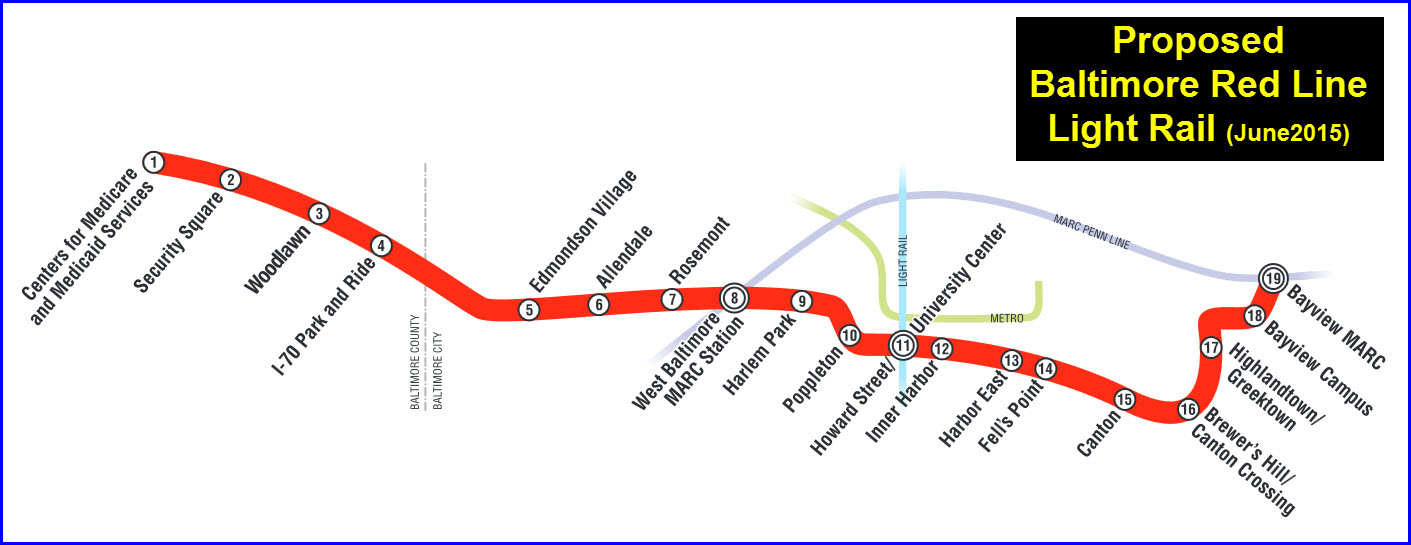
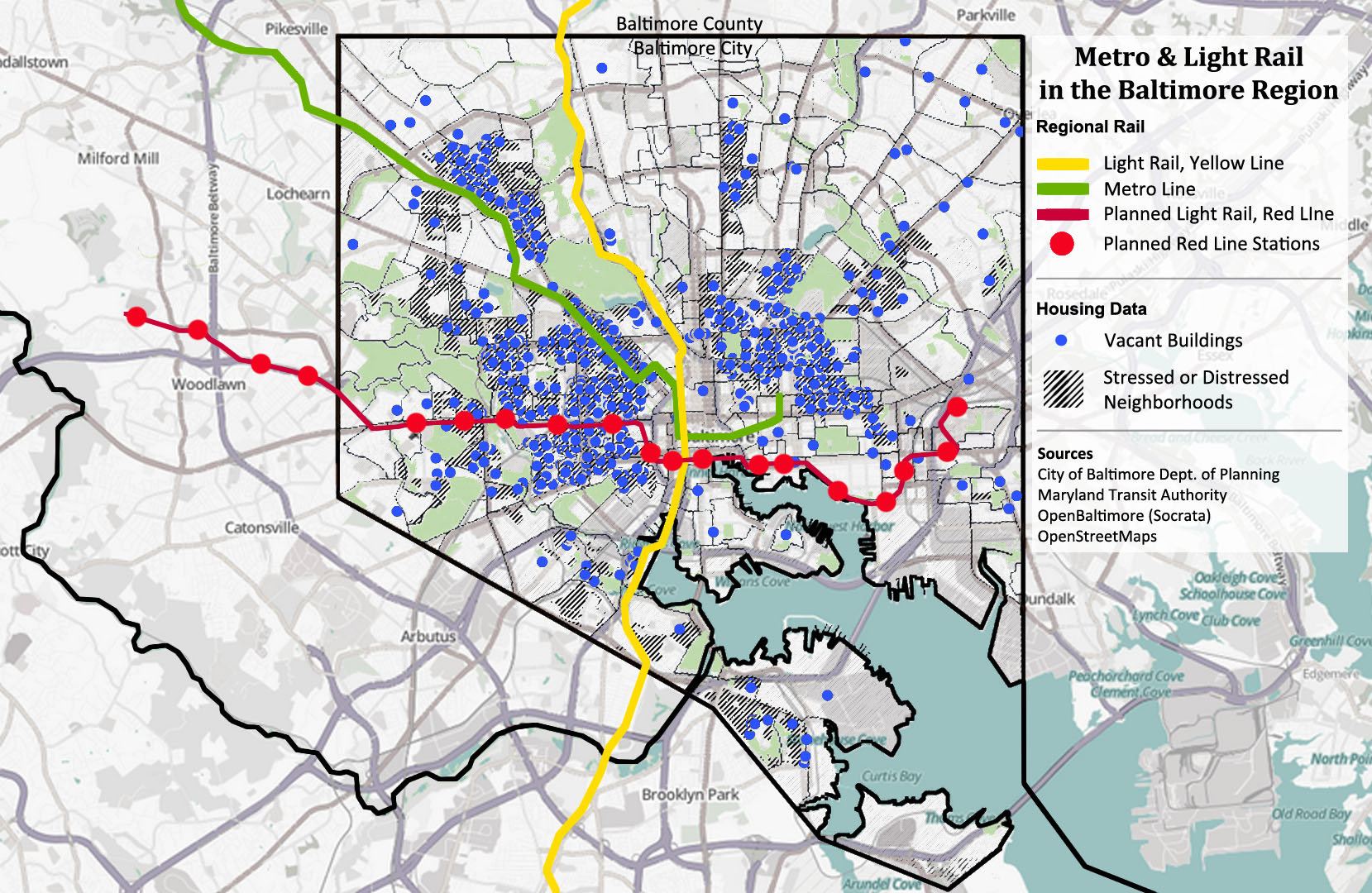
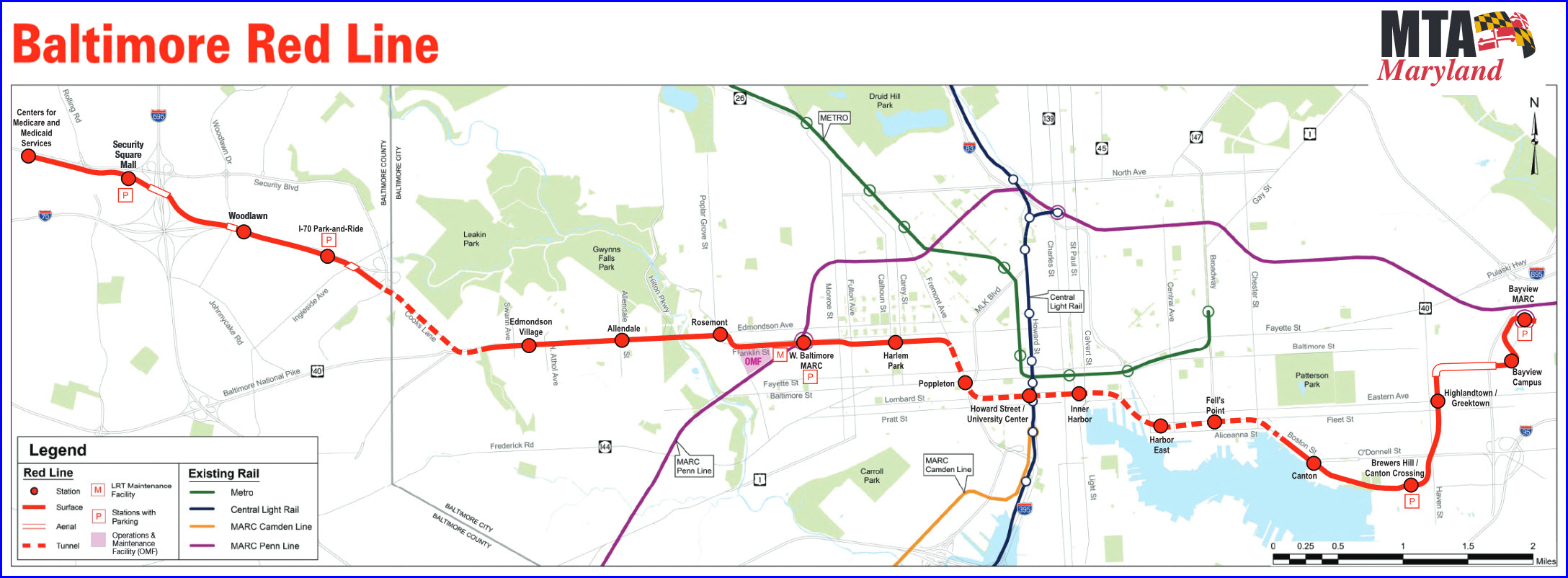
Discussions / Articles
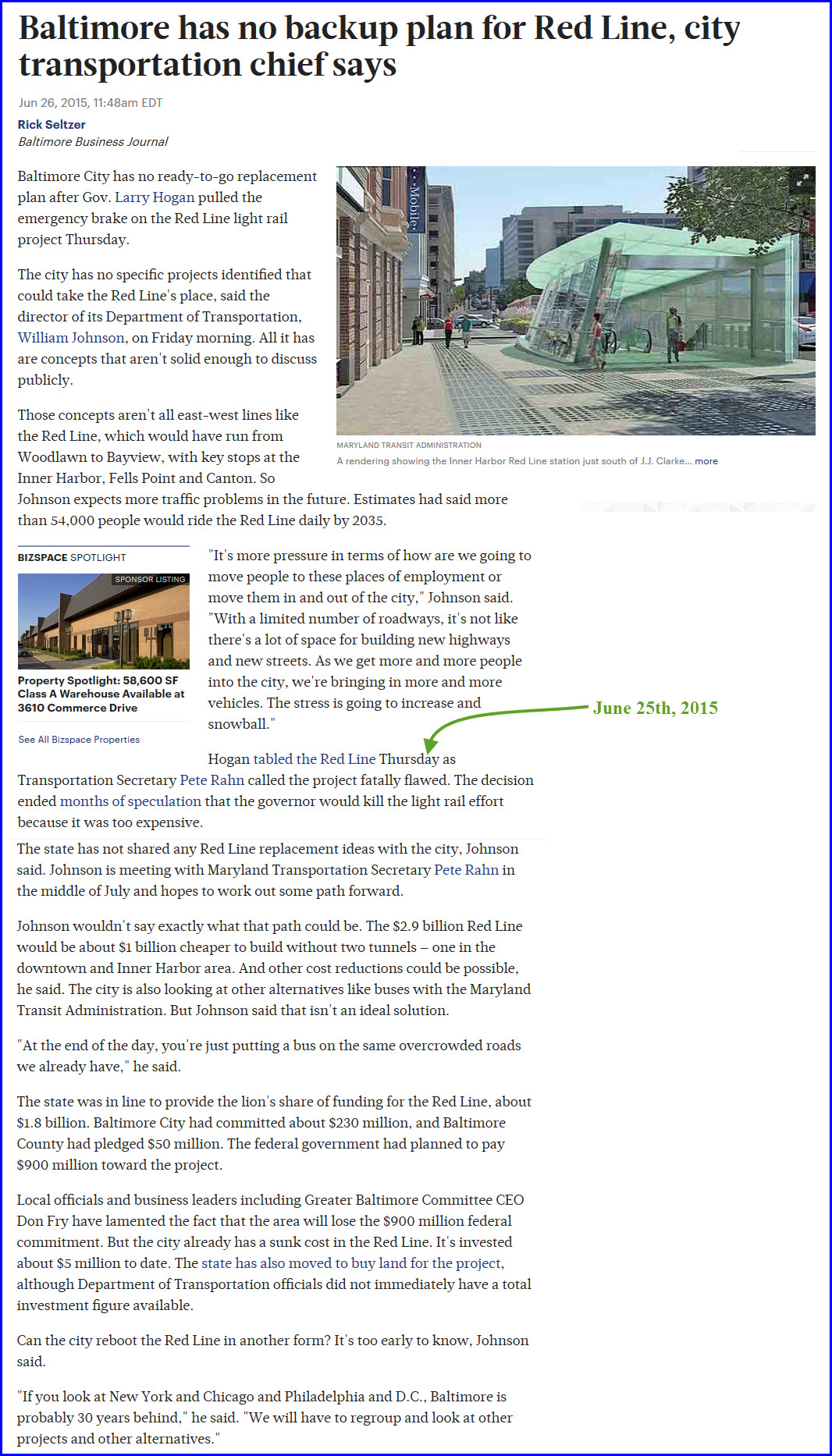
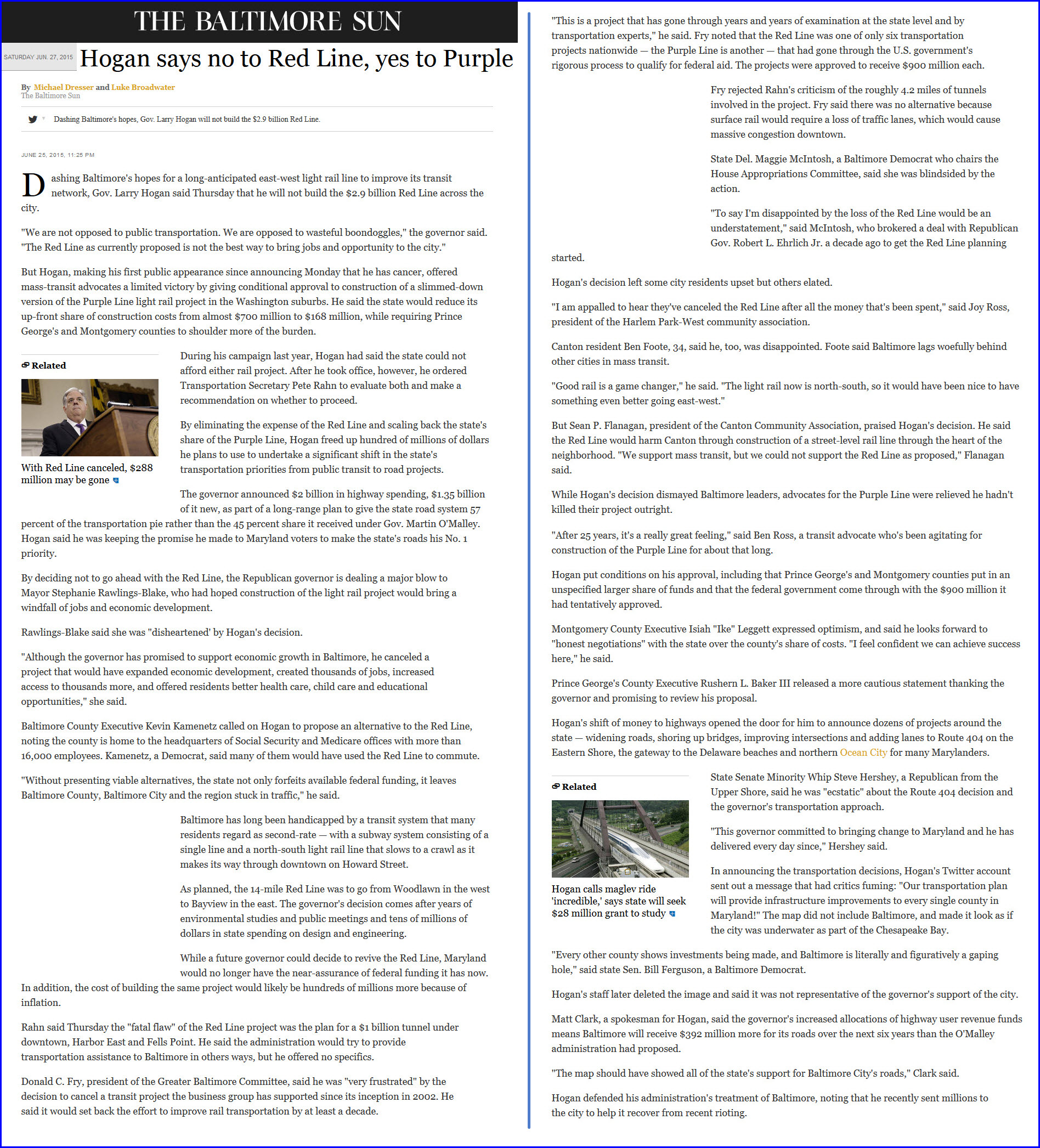

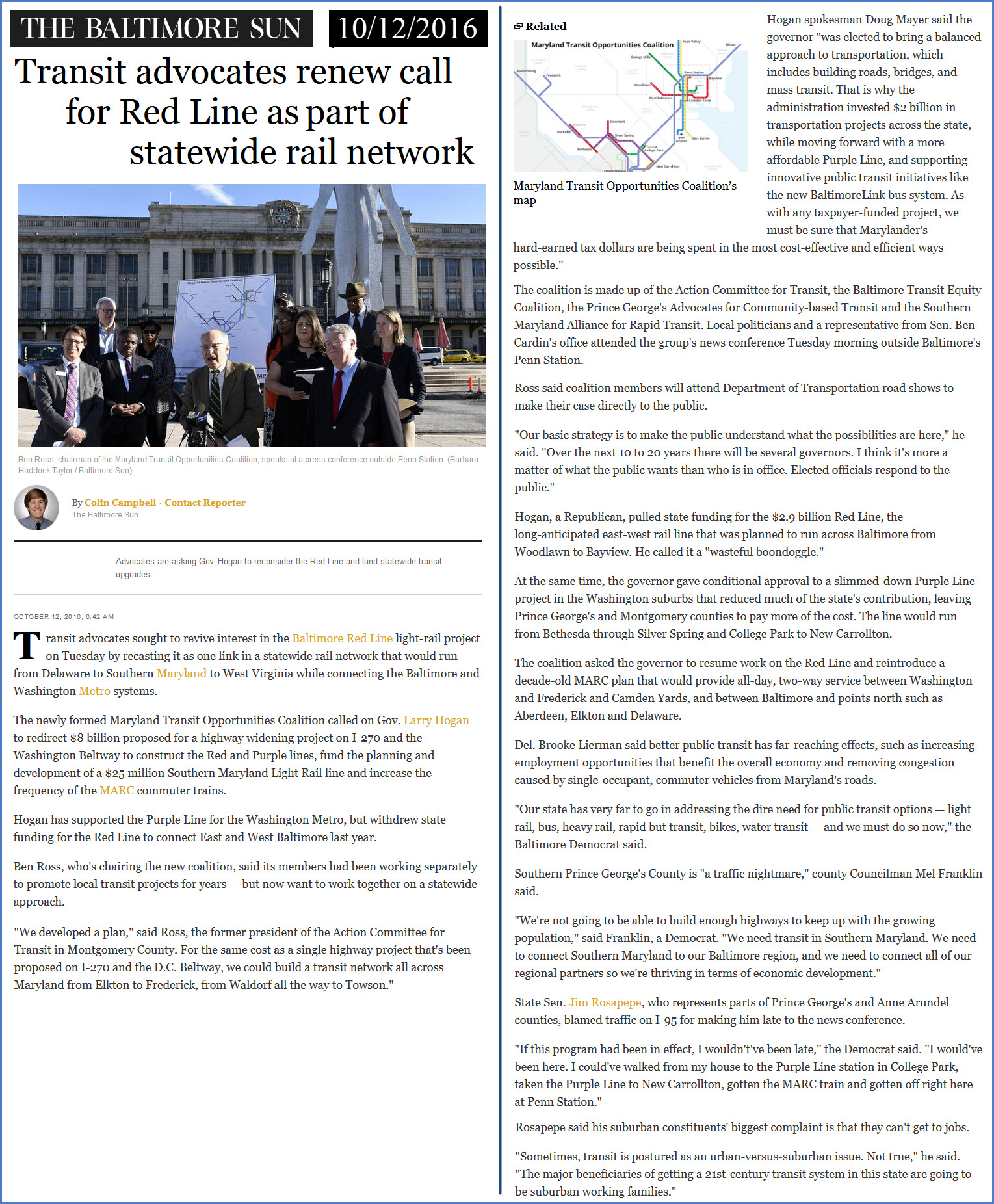
At first, I wasn't going to respond to Mr. Leroy's letter, but now that there is renewed interest with (our new) Governor Moore's announcement on Thursday, June 15th, 2023 in the Red Line, I will.
My first comment will be to again ask: "Why?" What does building another -separate and segmented- rail system offer Baltimore that a dedicated bus line can't? I'm going to pretend that I haven't already written what is above, and restate my objections. These concerns apply to the Purple Line too, as a dedicated bus system could have been instituted for a fraction of what the state, and "you and I", are shelling out for something that will ultimately be used by a few.
A1) Huge initial investment. A completely new "bus system" only needs a new "car barn" and new buses at the minimum in order to start operation. Busways, or Bus Transitways, such as the one used in Ottawa before they built the Confederation Light Rail line, fulfilled the requirement quite well before they too, went to the expense of putting in a rail system. At least with cities like Salt Lake City, the UTA's planners had the foresight to order the same cars they use on the three light rail lines, and have a connection at the Central Pointe station to said light rail line, so the S-Line cars can use the maintenance facility already in existence, along with utilizing the same parts for both system's cars. Bonus! Everybody wins.
A2) Spiraling and out of control construction costs due to a) Insufficient insight by the planners, b) Improperly trained or otherwise unknowledgeable planners, c) Same for the oversight committee, d) Political "ambitions", demands, or connections, e) Unforeseen issues with land acquisition and geography/geology f) Improper forecasting the effect of inflation on the project, g) Too many government agencies involved with the construction. If anyone wants to sit down and dispute any of my concerns, let's talk about the cluster you-know-what down in D.C. called the DC Streetcar. Better yet, visit my page and read about EVERYTHING that could go wrong - did go wrong in the construction of the system. If you're still not convinced that "shit happens", then go to my page on the High-Speed Rail Project in California, and see how one politician who was needed to approve the project, demand that the route be changed by 10's of miles to service a city within his district. If you don't think it could happen here, you are living under a rock. AND, finally, also read on the high-speed rail project how the system NOW faces not being built in it's entirety because of the out of control costs! But the advocates still want to spend your tax dollars so they can feel good, about something..... but I'm not sure what that "something" is. Excessive costs are also what has driven the Feds to not approve SEPTA's King-of-Prussia High Speed Line proposal - a project that had many benefits for the region.
A3) Exorbitant operation costs to maintain the system once up and running. This includes, but not limited to things like a) A locomotive to rescue stranded trains, b) Tampers, ballast regulators, periodic rail grinding and the like to maintain the track, c) Ticket vending machines requiring extensive AND expensive maintenance including parts, supplies, labor, and vehicles - unless you make the system free to ride, d) Expensive and routine maintenance of the right-of-way for things like tree removal, snow removal, brush and weed control, empty trash cans, change light bulbs, e) Crews to maintain the physical components of the system such as crossing gates that are always being busted due to impatient cars and their owners running thru them, or the mechanisms failing, or someone running into a support pole for the huge variety of crap that a rail system needs, maintenance of the power sources, maintenance of the catenary, maintenance of the track, maintenance of the signals, and so on and so on.... none of which a bus system requires because other (non MTA) entities are already spending your dollars to pay for road and signal maintenance. AND, if we bury part of the line, maintenance costs go even higher due to the nature of maintaining tunnels and everything related to them - in effect, the costs now rival that of an underground metro or subway system
A4) When you have an accident, a fire, a power failure, a "broken-down" train, or anything else that STOPS the line from running and moving people: besides inconveniencing people, they become frustrated and pissed-off, and some patrons will decide to "not come back" to use the service.... let's say maybe because they got fired for coming in late, or they were docked time, whatever. The chances of this happening are less with a bus system with the above scenario's given that busses can go around the problem area, or keep running in the event of a power failure.
A5) A side note to the accident and fire situations above, is that those scenarios place a burden on the bus system of the MTA, by having to provide extra busses for a "bus bridge" when something like that happens. The MTA just doesn't have the spare busses sitting around, waiting for things like that to happen. Fortunately, those kinds of things happen enough that bus operations handles them with relative ease.
A6) Another side note to 4 - During a recent light rail system repair - the replacement of the grade crossing at Timonium Business Park road, the line was shut down between Lutherville and Hunt Valley, FOR SIX WEEKS! Frustrating, inconvenient, in addition to the on-off, on-off aspect. This wouldn't happen with a bus system.
A7) Years ago, I used to travel the country a lot for business. I was flying somewhere almost every week. For a short trip, like an overnighter, I would drive to BWI and park there. For longer trips, my wife would drop me off and pick me up - BWI from Towson is a half hour ride. One time, I decided to try using the light rail to get home, an experiment of sorts. Including wait time at BWI, travel time on the light rail (about an hour to Lutherville), and then waiting for someone to come and get me and take me the last few miles, it took almost two hours. In a day and age when people are flying around on the Beltway to save what, a few seconds of commuting time (and getting into some really bad accidents here of late) do I really want to spend that extra time on a train when I could be at home taking a nap? :-)
A8) A friend of mine, an avid baseball fan, used to ride the light rail downtown for the games. He lives in Parkville. So right off the bat, he has an extra 20-25 minute commute to (say) the Timonium or Lutherville station. On one return trip around 10pm, the train stopped at North Avenue, and he was told to get off the train, because he was taking the train into the yard. Not ALL operators reset their destination signs to the proper destination, so when the train was at the stadium, it could have said Hunt Valley. On a second trip home, the train got somewhere north of the North Avenue station, around 28th Street, and the train just stopped, and it caused a delay of almost 2 hours. So now, he has given up on using light rail and drives downtown, and pays the fifteen bucks to park, because it saves him about an hour in each direction, and is RELIABLE!!!
My only relief in Governor Moore's announcement the other day, is that he and his gang will be exploring alternatives to having the Red Line as a rail project. Another one of my friends, who is also a transit advocate, suggested putting in a trackless trolley (electric bus) system in, but it still suffers from half the same problems as a rail system does: a fixed infrastructure and one that relies on the power grid for operation. A hybrid version of the bus is available which could alleviate some of those issues, and can even come off the wire to go around accidents and fires.
So let's see what this one reader has to say, shall we.......
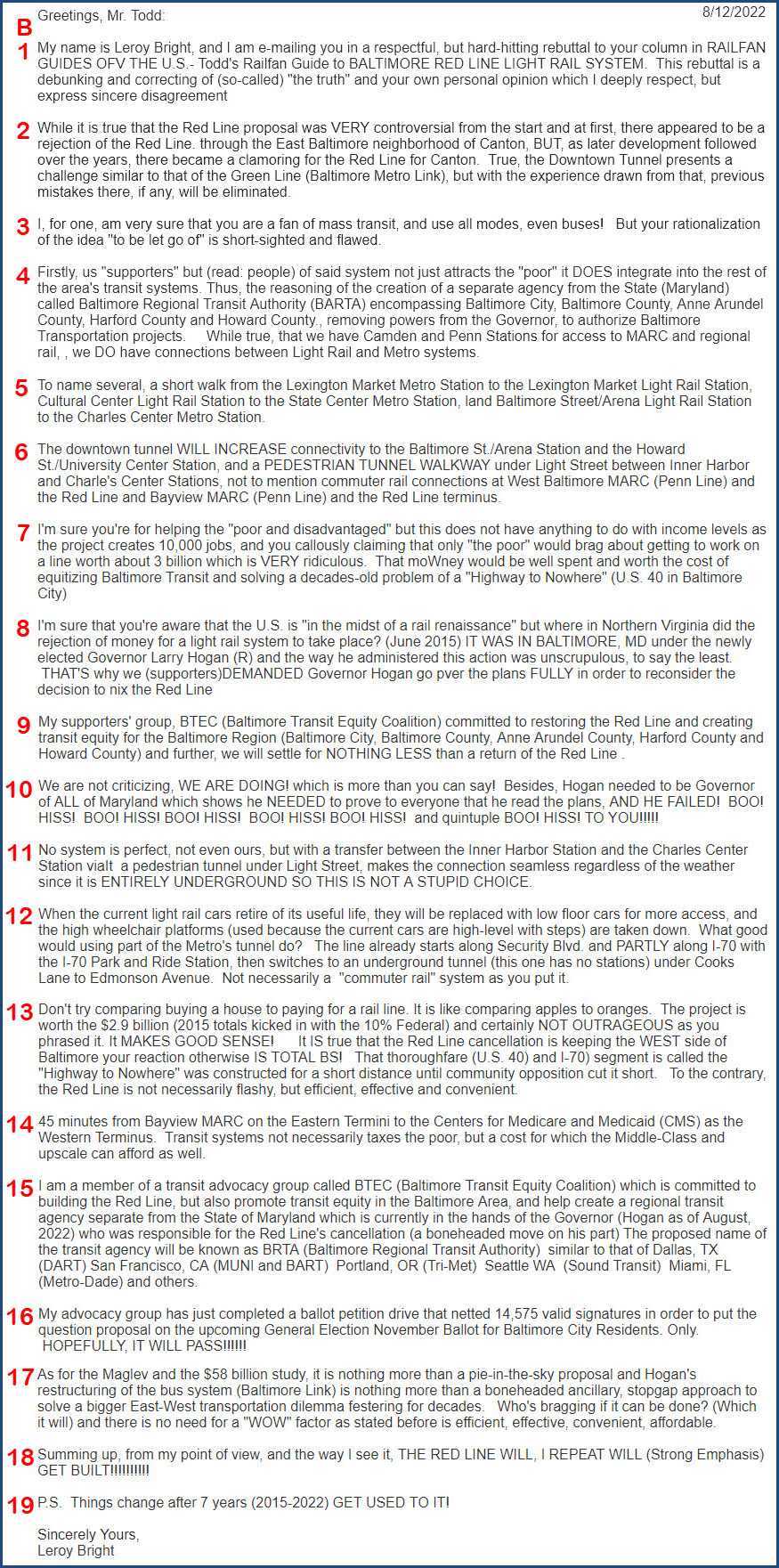
B1 - Disagree away :-) And get ready to agree to disagree.
B2 - First, the tunnel he is referencing is on the Metro Subway, not the Metro Link. Secondly, just because we had issues and gained some experience with the tunneling around the Shot Tower due to soft ground and water seepage, it doesn't mean that mistakes STILL won't be made again, even if we use the same company to do the tunneling. Humans are not very good at learning from past mistakes - most of the time..... And, just because we did make mistakes in the past, doesn't mean we can't make mistakes again - he cannot just equivocally state and guarantee that mistakes will be eliminated - mainly because he is not in control of any aspect of the construction phase.
He infers that Canton originally opposed the Red Line system, and then, as plans developed, became to liking it. This forces me to mention the Howard Street corridor. When Light Rail was originally planned for Baltimore, "they" said it would revitalize the Howard Street Corridor. Well, 30+ years later, EVERYONE is still waiting for that revitalization of Howard Street to arrive! Fortunately, Canton DID NOT wait for the Red Line to move ahead, because the eastern end of Boston Street around Haven St, many shopping centers and restaurants have all come in, ALL WITHOUT THE BENEFIT OF RAIL TRANSPORTATION!!! Wish that stuff was there when we lived in H'town in the early 90's! :-)
B3 - Refer to #B1 :-) I could argue that your reasons "for" are just as short-sided and flawed.
B4 - The Red Line would integrate into the current MTA system poorly, for reasons mentioned elsewhere. And connections to the Light Rail and Metro Subway systems, are, well, at best, frustrating, and certainly not convenient or weather friendly. Even the easy connection from MARC to light rail at Camden exposes you to the elements. The only semi-protected transfer is at Penn Station. But because the MTA made train service to Penn Station part of a line, and not a shuttle, it is vastly underused because people have to wait too long to get out of the station to go anywhere - remember what I said about people being impatient these days! The MTA would be better off to just put in a Penn Station to Mt Royal shuttle, operating every 5 or 10 minutes! The one time I did take light rail to downtown for an Amtrak trip, I just missed the "shuttle", and had to walk the 7 blocks in order to make the train. :-( BTW, when I have been at Penn Station for either railfanning, or to use Amtrak, I have rarely ever seen anyone boarding or getting off the light rail there!
Also not quite sure how the creation of BARTA really helps with much of anything, especially with the construction of, and maintaining a new rail system. Additionally, what are the qualifications of the people associated with the group, are any of them long-time transit professionals who know the ins and outs of public transportation? My guess would be no. And if so, it remains to be seen if they can provide any sort of relevant advice or inputs.
B5 - NONE of those transfers you mention are CONVENIENT connections when you have to walk a block or more out in the open exposed to the elements, as I have already stated - NONE. If anyone has ridden the New York City Subway system, or used the light rail to heavy rail transfer in Cleveland, you know what a convenient connection is - either the same or an adjacent platform. I tried in 1993 when we had our version of "Quality Circles" at the Light Rail Shops, suggesting that the MTA make a transit mall between the Metro and Light Rail Lexington Market stations (by enclosing or otherwise sheltering the street), but they turned down the idea - so how many people coming down from Owings Mills want to walk or run that block in the rain, or wade thru six inches of snow in the winter (besides more waiting in the cold)? It's neither a practical or convenient method of transfering, most will take their car. The only thing that has saved the Metro Subway system from being almost completely useless is the extension to Hopkins.
B6 - For the most part, see #B1 again :-).
B7 - Several trains (LOL) of thought in this one to address..... We're creating 10,000 temporary jobs, not permanent, and the jobs will change as the project advances. I do not know anyone here in the burbs that uses light rail and brags about using it, they do it only because it is convenient or saves them from (for instance) parking downtown - HOWEVER, if they don't work adjacent to a station, most people here in the burbs are not going to consider taking light rail because of how long it takes to get anywhere once off the rail system. Not sure how the Red Line is going to help the "I-70 hi-way to no-where?" Unless the Red Line comes up from the downtown area on the Light Rail system (or Metro Subway if they are really planning an underground solution) already in place, and then heads west on Franklin St - because the orphaned I-70 is 6-7-8 blocks away from Pratt and Lombard Streets. I believe the current proposal is to go underground around the West Baltimore MARC station, and make a diagonal for the Pratt and Howard Street area, which bypasses the "hi-way to no-where' completely and doesn't benefit it or otherwise fix or change anything.
B8 - Did anyone else fail to link/associate the cancellation of the NOVA light rail system back in 2015 with the actions of Governor Hogan? Phew, there is a reach of monumental proportions.... Hello, Hogan is in Maryland, not Virginia. Hogan DID NOT Have anything to do with the NOVA line! Hello? One article about the cancellation is here. Then there is the political aspect of public projects which had a part in the line's cancellation, which I also mentioned up in A2.
B9 - I think we get that :-) But in regards to transit equality, let's figure out how we can help with the misnamed "food deserts" of Baltimore City, where people don't have easy access to a grocery store. These areas are more of a situation where many of the poor can't just hop in car and drive to the nearest market, which even for me, in the burbs, is at least a mile away, or closer to two if I don't use Grauls. So while the majority of people in the city live perhaps closer to a grocery store than I do, they can't get there easily - but then, I remember my grandparents walking a mile or more to a grocery store in NYC with a shopping basket, ALL YEAR LONG, rain/shine, hot/cold, etc. If you and your panel want to solve a problem, work on this one instead, it will have more life changing results than wasting your time on advocating a rail line we don't need because we already have a transportation system in place that goes to the locations the Red line will.
B10 - You are doing what exactly? Being an advocate is doing nothing more than me being a naysayer and writing about "it". You're not planning, building, or executing anything. Want to be an advocate for something that really matters, do something about the senseless murders that are becoming an all too familiar daily scene in the United States. And really, BOO HISS - sounds like I'm back at Towson High.
B11 - One underground connection does not make a system to system transfer seamless, especially if it is not properly maintained.
B12 - There is nothing wrong with using high-level platforms for wheelchair access, especially given the number of times the service gets used. The only time that becomes a problem, for instance, is when I took my handicapped daughter to an event downtown, and the operator missed the platform in Lutherville on the return trip, and had to walk to the other end of the train to back it up (instead of being able to use reverse). Portland Oregon gets around this by using a mixture of high-level and low-level cars in the same train, which necessitates using a two-pack all day long instead of being able to use a single car as we do after 8pm - the only real drawback to Tri-Met's approach.
Also in 12, by utilizing the Metro Subway's tunnel, you now have a "built-in" system of "blending" and transferring between the systems... this is an obvious benefit. Can you imagine, wanting to go from Jackson Heights up in New York City, to (say) the Bronx, and then having to come out onto the streets in order to transfer to another line - how awful would that be? Think of making mass transit a pleasant mode of transportation to take, instead of the ordeal the MTA has made it today in Baltimore. You have transit professionals that don't make logical or intelligently driven decisions - they are driven by cost.
If you want to look at some of the bad decisions our MTA has made in the past. These are issues I became aware of when I worked at Light Rail, Lord knows how many other screw-ups I never heard of happened - so what makes you think mistakes won't happen when the Red Line gets built (or what is happening now as the Purple Line is being built?). And how much will those mistakes cost us?
--1) Support poles for the catenary on the light rail line are on THE OUTSIDE of the two tracks, and not in the middle, thereby doubling the cost of this aspect of construction. Poles only need to be on the "outside" at crossovers - multi-millions of dollars wasted.
--2) Someone in engineering, back in the 90's, specified a one megawatt substation for the yard, didn't find this out until it was installed and it couldn't power the LRV's in the yard during the winter, it was supposed to be a two megawatt unit. Not sure how this was ever resolved.... probably never knowing how the MTA operates.
--3) The MTA, without consulting Baltimore City, planned on signal pre-emption on Howard Street. They purchased all of these special GPS receivers, that didn't have a required RS-232 port on them (and couldn't or wouldn't return them to get the correct ones), had them installed on the LRV's, never to be used, because Baltimore City did not agree to the MTA messing with their traffic light patterns. Millions of dollars wasted.
--4) On the heavy rail side, the extension to Owings Mills was a different gauge than the rest of the line by a quarter of an inch, requiring a small section of track, a transition, to change gauge. Why did this happen if we are using so called "experts" (and whether they are in the MTA or at a consulting firm, it makes no matter - this is one problem of not having real railroad professionals involved with the operation of many transit systems).
--5) Although not an MTA problem, the state, when they built Warren Road between York Road and I-83, allowed the contractor to do a REALLY piss-poor sub-standard base for the road. As a result, between the grade crossing and Beaver Dam Road, it is STILL like riding a roller coaster, even though they have tried to stabilize the ground, at least twice - it keeps sinking in places. Where were the inspectors when they were doing the grading and site prep?
B13) - First of all, comparing the "purchase" of a rail system to that of house IS EXACTLY TO THE POINT. If you are buying something basically out of your reach, and someone is offering to pay for 10% of your purchase price, how do you pay for the remaining 90%? It's kind of like the people that got roped into buying a house years ago, and then finding out they couldn't keep up the payments, and had to abandon the house, losing what they have already put into it. Read the stories surrounding California's High Speed Rail project.....
Additionally, I don't really understand how and why a rail system is any more efficient, effective, and convenient than a bus system. You need to convince a whole lot more people than me with good solid facts to win that argument! He also failed to complete his thought of the cancellation and the west side of town, and here's the "agree to disagree" part: my opinion is not pure BS, because most of my opinions are based on what is happening around the U.S. on other transit systems, as well as our own. References are made in A1 and A2 above.
B14) - It would be 45 minutes with a bus on a separated and dedicated roadway too. And NO, the poor can't really afford to pay for a system that costs billions of dollars. The only way to make it up to them is to make the line/system free to use. Remember that it was O'Malley that raised the state tax from 5 to 6% on January 3rd, 2008, and remember too, that another Democrat, Paris Glendening, raised the alcohol tax from 6% to 9% on July 1st, 2011. Yes, "they" may be for transit, but having them in office also hits MY bottom line, as well as EVERYONE else's (at least I save 3% by not drinking LOL).
B15) - No comment for a change.
B16) - Go for it.
B17) - Well, for once, we both agree that the 58 mil spent on the Maglev proposal was a waste of money. Looks like he also agrees with the renaming to the Baltimore Link as a complete waste of both TIME and MONEY. The renumbering and renaming of the bus routes was a waste of time, effort, resources, and money. It accomplished basically NOTHING except to further confuse riders.
Part of the lure to having a rail system put in, as opposed to a bus system, may be summed up in an observation from the one referenced article about the NOVA cancellation. And when you like something, you will find reasons to overlook the negative aspects. It's like buying a new car - and you're looking at a Cadillac and a Kia. You can only afford the Kia, but you still want the Cadillac, so let's go out and tax everyone even more so I can buy the Cadillac :-).

Bottom line, if a rail system is decided on for the Red Line, I don't really have a problem with it, as a rail and transit fan; I just think it is a HUGE waste of money that could be better spent somewhere else to make the lives of -most- of the people that will be using it, better.
mmendedit
Disclaimers:
I love trains, and I love signals. I am not an expert. My webpages reflect what I find on the topic of the page. This is something I have fun with while trying to help others.
Please Note: Since the main focus of my two websites is railroad signals, the railfan guides are oriented towards the signal fan being able to locate them. For those of you into the modeling aspect of our hobby, my indexa page has a list of almost everything railroad oriented I can think of to provide you with at least a few pictures to help you detail your pike.
If this is a railfan page, every effort has been made to make sure that the information contained on this map and in this railfan guide is correct. Once in a while, an error may creep in :-)
My philosophy: Pictures and maps are worth a thousand words, especially for railfanning. Text descriptions only get you so far, especially if you get lost or disoriented. Take along good maps.... a GPS is OK to get somewhere, but maps are still better if you get lost! I belong to AAA, which allows you to get local maps for free when you visit the local branches. ADC puts out a nice series of county maps for the Washington DC area, but their state maps do not have the railroads on them. If you can find em, I like the National Geographic map book of the U.S..... good, clear, and concise graphics, and they do a really good job of showing you where tourist type attractions are, although they too lack the railroads. Other notes about specific areas will show up on that page if known.
Aerial shots were taken from either Google or Bing Maps as noted. Screen captures are made with Snagit, a Techsmith product... a great tool if you have never used it!
By the way, floobydust is a term I picked up 30-40 years ago from a National Semiconductor data book, and means miscellaneous and/or other stuff.
Pictures and additional information is always needed if anyone feels inclined to take 'em, send 'em, and share 'em, or if you have something to add or correct.... credit is always given! Please be NICE!!! Contact info is here
Beware: If used as a source, ANYTHING from Wikipedia must be treated as being possibly inaccurate, wrong, or not true.
RAILFAN GUIDES HOME
RAILROAD SIGNALS HOME
NEW JUL12/2015, APR28/20021, AUG25/26/2022, MAY09/2023, JUN18/19/22/2023
Last Modified 22-Jun-2023